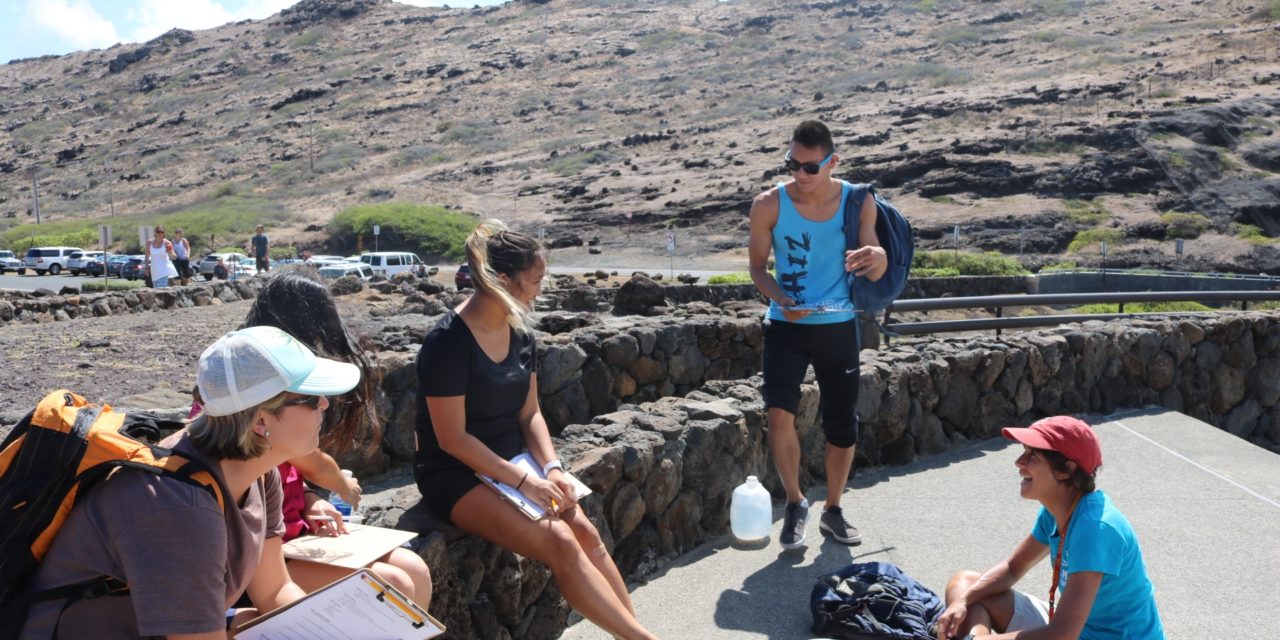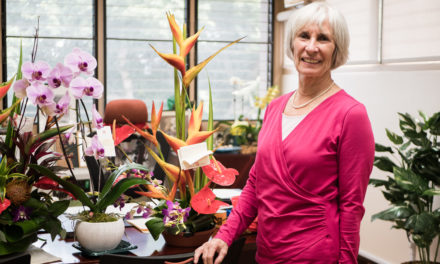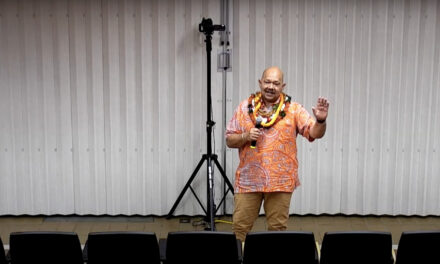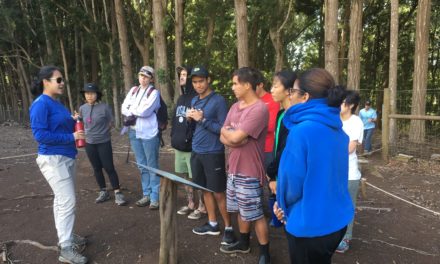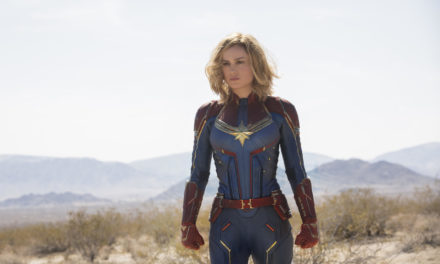By Kayla Valera | Staff Writer
In the past, KCC students who were pursuing an ocean or earth science major had to wait until they transferred to UH-Mānoa in order to fulfill their credit requirement for an oceanography lab. But that changed last Fall 2016, when the National Science Foundation (NSF) awarded a grant in part to support marine science at KCC in order to cultivate a more local and diverse group of students to pursue a career in ocean or earth science. This effort includes creating a new introductory oceanography lab.
The new lab class was piloted last fall as a once-a-week, 3-hour-long class. It is now an official one-credit course at KCC titled OCN 201L and taught by Dr. Daniela Bottjer-Wilson. Within her roster of three students this semester is Chaminade student Justin Ho, who’s studying criminal justice and takes OCN 201L at KCC to fulfill one of his two lab credits. Along with Ho are KCC students Hayley Luke, an Environmental Science and Marketing major, and Liberal Arts major Chelsea Yasui.
“Many of my students enjoy the OCN 201 lab because learning takes place in a less formal classroom setting,”said Bottjer-Wilson in an email. “As a result, some of them become excited about oceanography and learning about the numerous career paths in the field. I find oceanography fascinating and absolutely enjoy teaching the small-sized lab, where I get to interact with each of my students.”
Previous classes were also made up of very few students with a broad range of majors and interests outside of oceanography. Even if students don’t intend on majoring in oceanography, this course will benefit students by educating them about the ocean and earth environment around them.
“I may not go into a geology or oceanography specific career,” said Luke in an email. “However, I think it’s important to have an understanding of both in terms of pursuing a career in sustainbility, especially here at home.”
Depending on a student’s major, this lab could also be paired with the OCN 201 lecture course offered at KCC. The OCN 201 lecture has a prerequisite of at least MATH 82.
The OCN 201L class will participate in three field trips throughout the semester. The first that happened this past Tuesday was a southeast Oʻahu Geology activity, which was led by Barb Bruno, a UH-Mānoa specialist in the Hawaiʻi Institute of Geophysics and Planetology (HIGP). This outdoors experience covered the formation of the southeast area of the island and subsequent geologic activity.
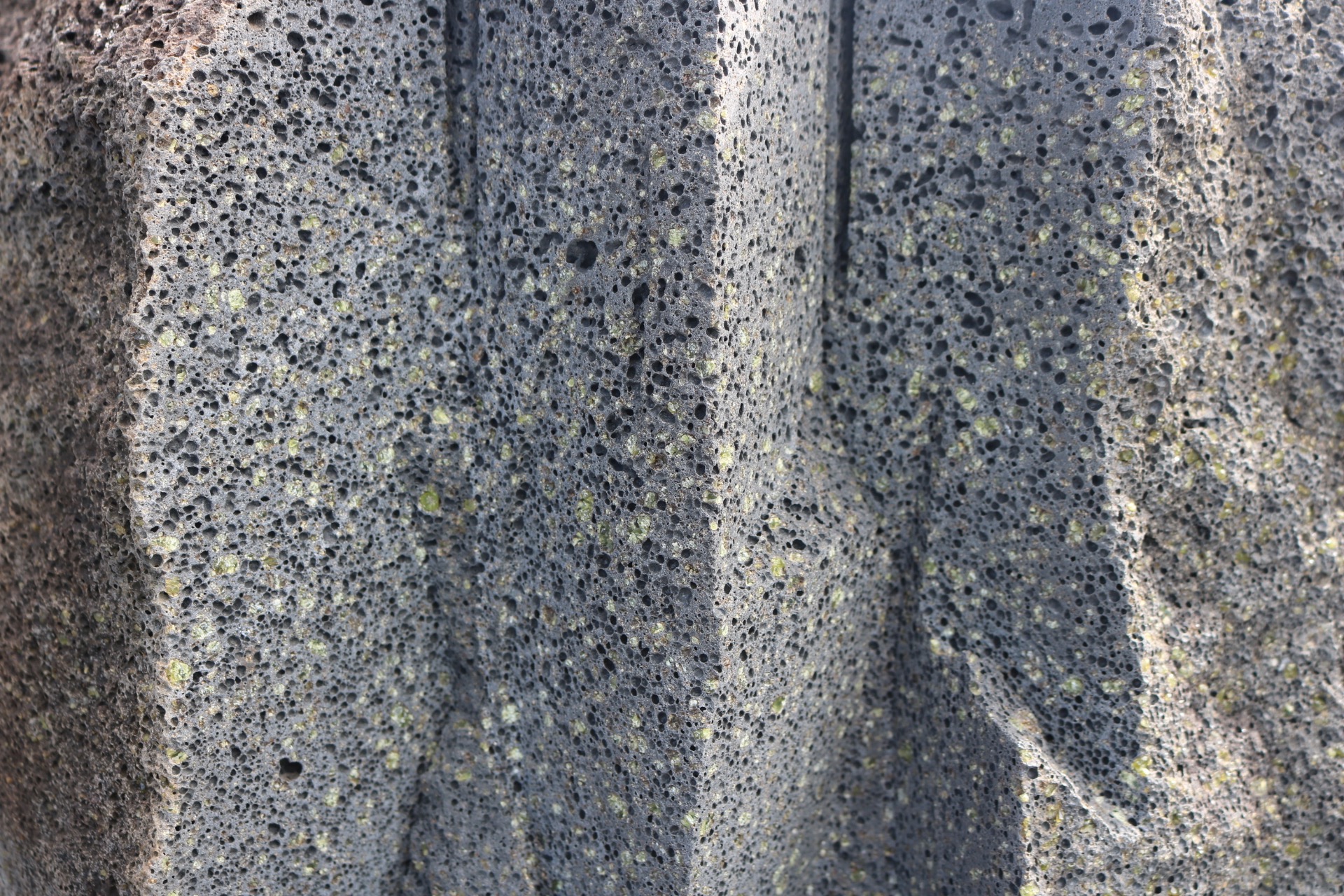
The students in OCN 201L looked at lava rocks found at Makapu’u that contained green olivine crystals. (Photo by Kayla Valera)
One of the places that class visited was Makapuʻu, where the students looked at different types of lava rocks and the olivine crystals that were housed in the rocks. The next stop was Lanaʻi Lookout near the Hālona Blowhole. The students were led through a tunnel and were asked to decide how it was formed. Though it appears to be a lava tube, students came to the conclusion that it may actually be man-made.
“The trip was fun,” said Ho in an email. “. . . I can get a better picture of how the ocean plays a part in the development of the islands and land formations. I would consider those careers since it seems so fun but since I’m already doing criminal justice I’m kinda set for that.”
The next field trip will visit the Hawaiʻi Institute of Marine Biology (HIMB) at Coconut Island (or Moku o Loʻe) off the coast of Oʻahu in Kāneʻohe on October 17. Normally, only educational groups may gain access to HIMB. This trip will allow students to gain a firsthand look into the work of marine biologists and their analysis of marine species found on the islands.
The final trip of the semester will be at Heʻeia Fishpond in Kāneʻohe on November 21. This event will teach students the native Hawaiian perspective of water by demonstrating the practice of fresh/salt-water fish farming.
Students interested in enrolling in OCN 201L should email the current professor, Bottjer-Wilson, at dbottjer@hawaii.edu, to learn more about the curriculum.

